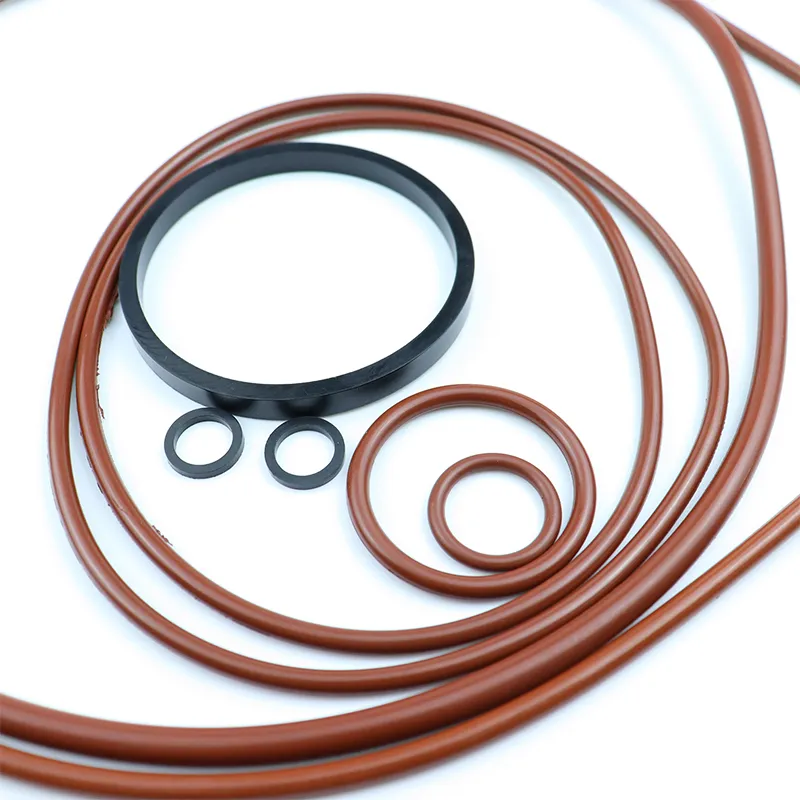Nov . 13, 2024 09:33 Back to list
hydraulic cylinder seal kits by size
Understanding Hydraulic Cylinder Seal Kits by Size
Hydraulic systems are integral to various industrial applications, providing the power needed to perform tasks with precision and efficiency. One of the essential components within these systems is the hydraulic cylinder, which is responsible for converting hydraulic energy into linear motion. To ensure the proper functioning of hydraulic cylinders, seal kits play a critical role. This article explores hydraulic cylinder seal kits by size, emphasizing their importance and how to choose the right kit for your needs.
The Role of Hydraulic Cylinder Seal Kits
Hydraulic cylinder seal kits contain various sealing components designed to prevent leakage of hydraulic fluids and maintain the efficiency of the hydraulic system. These kits typically include O-rings, rod seals, piston seals, wear rings, and backup rings, all crafted from materials that are resistant to wear, pressure, and temperature fluctuations. The seals ensure that the hydraulic fluid remains contained within the cylinder, allowing for the transfer of force without loss.
Importance of Size in Selecting Seal Kits
The size of the hydraulic cylinder is crucial when selecting the appropriate seal kit. Hydraulic cylinders come in various dimensions, and each size may require specific seals to ensure a proper fit and optimal performance. Choosing the wrong size can lead to fluid leakage, reduced efficiency, and even system failure. Therefore, it is essential to measure the cylinder’s bore, rod diameter, and stroke length accurately before selecting a seal kit.
1. Bore Size The bore size is the internal diameter of the cylinder. It is vital to know this measurement because the piston seals must fit snugly to prevent hydraulic fluid from escaping. If the bore size is not correctly matched with the seals, it can lead to improper sealing and potential damage to the hydraulic cylinder.
2. Rod Diameter The rod diameter is also critical in selecting the right seal kit. Rod seals must properly conform to the rod’s size to keep hydraulic fluid from leaking during the rod's extension and retraction. Measuring this accurately ensures the longevity and effectiveness of the seal.
3. Stroke Length Although stroke length does not directly determine seal size, it influences the overall design and wear characteristics of the seal kit. Longer strokes may result in increased wear and tear, making it essential to consider the material properties of the seals used in the kit.
Types of Seal Kits by Size
Seal kits are available in a wide range of sizes and configurations to suit various hydraulic cylinder applications. Here are some common types
hydraulic cylinder seal kits by size

- Compact Seal Kits Designed for smaller hydraulic cylinders commonly used in light-duty applications, these kits include smaller-sized seals that are effective in tight spaces
.- Standard Seal Kits These kits are suitable for average-sized hydraulic cylinders and are widely used in various industries, including construction, manufacturing, and automotive.
- Heavy-Duty Seal Kits For larger hydraulic cylinders used in heavy machinery, these kits typically include more robust seals to withstand higher pressures and extreme environmental conditions.
How to Choose the Right Seal Kit
When choosing a hydraulic cylinder seal kit by size, consider the following steps
1. Identify Cylinder Specifications Carefully measure the bore size, rod diameter, and stroke length.
2. Consult Manufacturer Guidelines Refer to the manufacturer’s specifications and recommendations for seal kits that match your hydraulic cylinder’s size.
3. Select Quality Materials Opt for seal kits made from high-quality materials, such as polyurethane or nitrile, which offer durability and resistance to hydraulic fluids.
4. Consider Application Requirements Depending on the operational environment, choose seal kits that can withstand specific conditions, such as high temperatures or exposure to harsh chemicals.
Conclusion
Hydraulic cylinder seal kits are vital for ensuring the smooth operation of hydraulic systems. Understanding the significance of size in selecting these kits can prevent costly leaks and maintenance issues. By carefully measuring cylinder dimensions and considering environmental conditions, users can confidently choose the right seal kits to enhance the efficiency and longevity of their hydraulic equipment.
-
The Trans-formative Journey of Wheel Hub Oil Seals
NewsJun.06,2025
-
Graphene-Enhanced Oil Seals: Revolutionizing High-Pressure Oil Sealing
NewsJun.06,2025
-
Future of Hydraulic Sealing: Advanced Intelligent TCN Oil Seals
NewsJun.06,2025
-
Don’t Let a Broken TCV Oil Seal Ruin Your Day
NewsJun.06,2025
-
Bio-Inspired Dust Seals for Better Sealing Performance
NewsJun.06,2025
-
Biodegradable and Sustainable Hydraulic Seal Materials
NewsJun.06,2025
-
Top Oil Seal Solutions for Your Industrial Needs
NewsMay.22,2025
Products categories
















